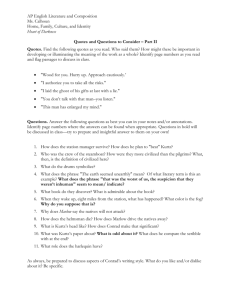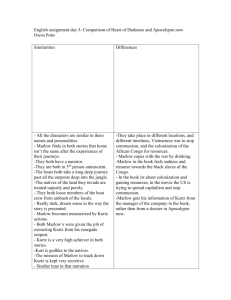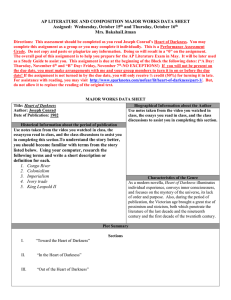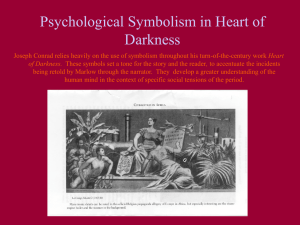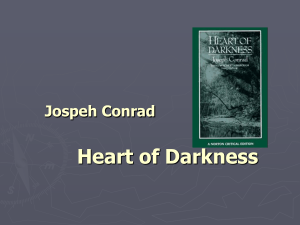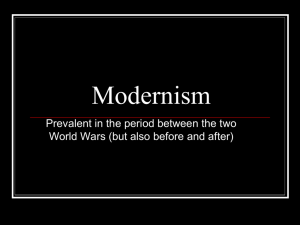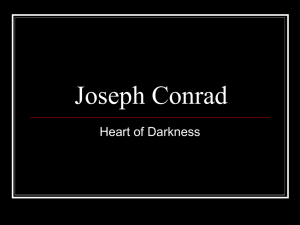Heart of Darkness Key Facts - Social Circle City Schools
advertisement
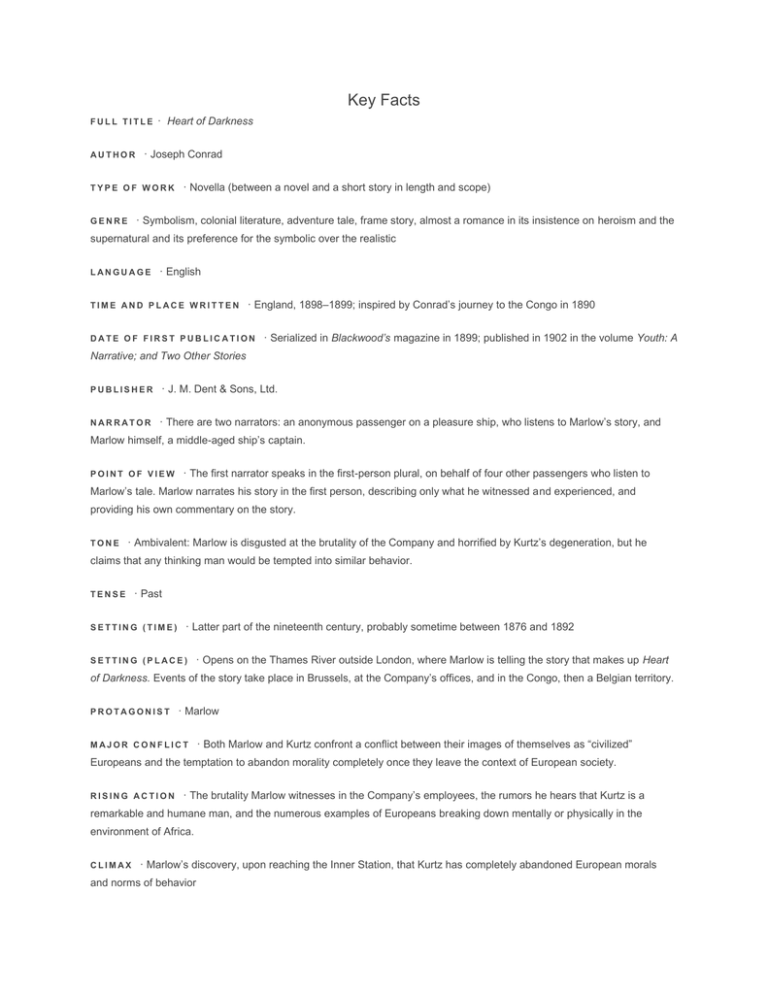
Key Facts FULL TITLE AUTHOR · Heart of Darkness · Joseph Conrad TYPE OF WORK · Novella (between a novel and a short story in length and scope) · Symbolism, colonial literature, adventure tale, frame story, almost a romance in its insistence on heroism and the GENRE supernatural and its preference for the symbolic over the realistic LANGUAGE · English TIME AND PLACE WRITTEN · England, 1898–1899; inspired by Conrad’s journey to the Congo in 1890 DATE OF FIRST PUBLICATION · Serialized in Blackwood’s magazine in 1899; published in 1902 in the volume Youth: A Narrative; and Two Other Stories PUBLISHER · J. M. Dent & Sons, Ltd. NARRATOR · There are two narrators: an anonymous passenger on a pleasure ship, who listens to Marlow’s story, and Marlow himself, a middle-aged ship’s captain. POINT OF VIEW · The first narrator speaks in the first-person plural, on behalf of four other passengers who listen to Marlow’s tale. Marlow narrates his story in the first person, describing only what he witnessed and experienced, and providing his own commentary on the story. TONE · Ambivalent: Marlow is disgusted at the brutality of the Company and horrified by Kurtz’s degeneration, but he claims that any thinking man would be tempted into similar behavior. TENSE · Past SETTING (TIME) · Latter part of the nineteenth century, probably sometime between 1876 and 1892 SETTING (PLACE) · Opens on the Thames River outside London, where Marlow is telling the story that makes up Heart of Darkness. Events of the story take place in Brussels, at the Company’s offices, and in the Congo, then a Belgian territory. PROTAGONIST · Marlow MAJOR CONFLICT · Both Marlow and Kurtz confront a conflict between their images of themselves as “civilized” Europeans and the temptation to abandon morality completely once they leave the context of European society. RISING ACTION · The brutality Marlow witnesses in the Company’s employees, the rumors he hears that Kurtz is a remarkable and humane man, and the numerous examples of Europeans breaking down mentally or physically in the environment of Africa. CLIMAX · Marlow’s discovery, upon reaching the Inner Station, that Kurtz has completely abandoned European morals and norms of behavior FALLING ACTION · Marlow’s acceptance of responsibility for Kurtz’s legacy, Marlow’s encounters with Company officials and Kurtz’s family and friends, Marlow’s visit to Kurtz’s Intended · The hypocrisy of imperialism, madness as a result of imperialism, the absurdity of evil THEMES MOTIFS · Darkness (very seldom opposed by light), interiors vs. surfaces (kernel/shell, coast/inland, station/forest, etc.), ironic understatement, hyperbolic language, inability to find words to describe situation adequately, images of ridiculous waste, upriver versus downriver/toward and away from Kurtz/away from and back toward civilization (quest or journey structure) SYMBOLS · Rivers, fog, women (Kurtz’s Intended, his African mistress), French warship shelling forested coast, grove of death, severed heads on fence posts, Kurtz’s “Report,” dead helmsman, maps, “whited sepulchre” of Brussels, knitting women in Company offices, man trying to fill bucket with hole in it FORESHADOWING · Permeates every moment of the narrative—mostly operates on the level of imagery, which is consistently dark, gloomy, and threatening


